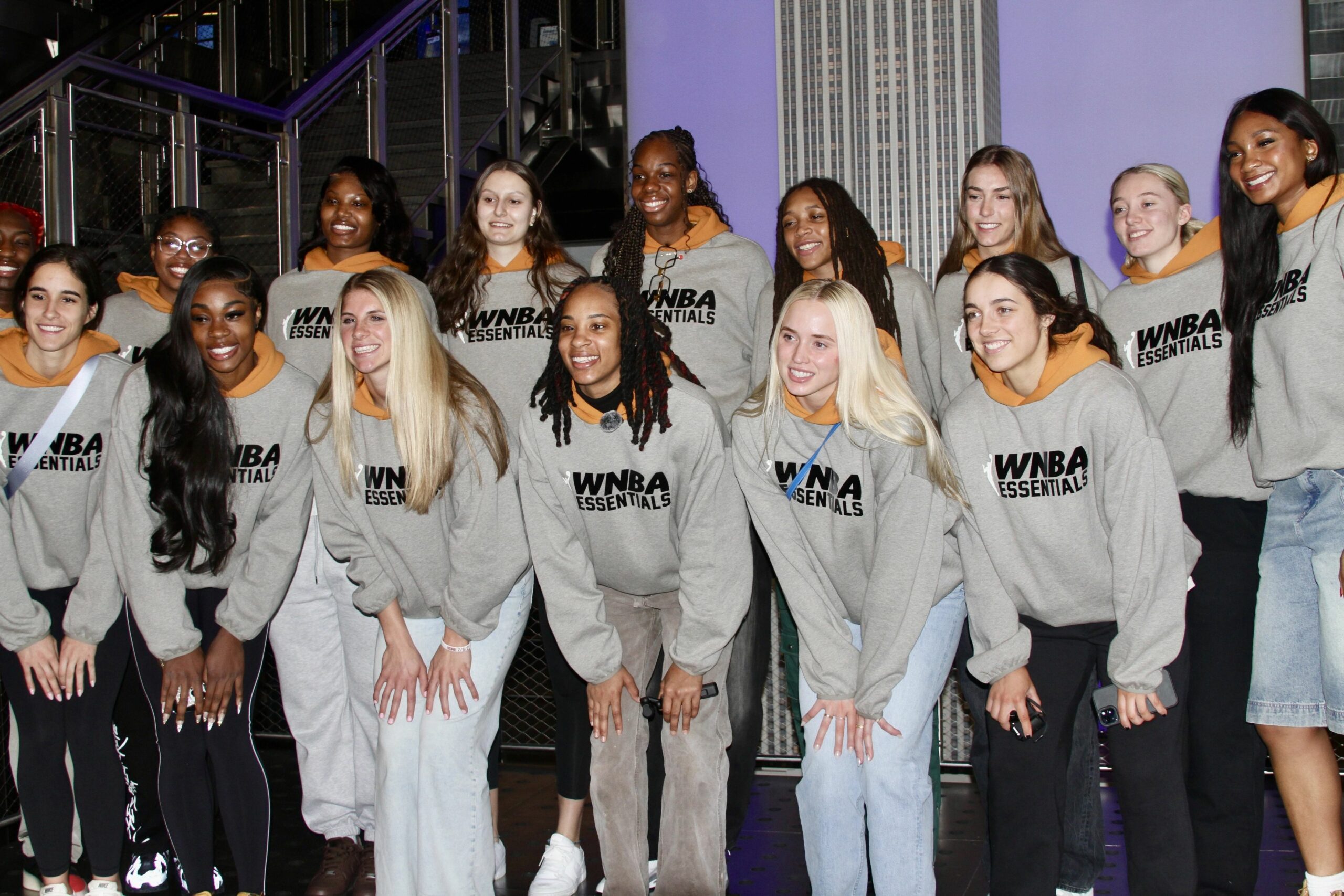
thenews2.com/Depositphotos.com
July 10, 2025
How Is the WNBA Reimagining the Sports Marketing Game?
With a boost from newer stars including Caitlin Clark, Angel Reese and Paige Bueckers, the WNBA has surged in popularity in recent years, providing a fresh opportunity for brands to invest in women’s sports.
Also lifted by enhanced media coverage, the WNBA’s 2024 season delivered the league’s most-watched regular season in 24 years, finished with its highest attendance in 22 years, and set records for digital consumption and merchandise sales. The 13 franchises of the league vaulted in value by an average of 180% over the last year, according to research by Sportico.
For brands, WNBA partnerships — either with individual players, particular teams or the league as a whole — offer an opportunity to reach women while championing female empowerment and diversity. Women make up 44% of WNBA fans versus 40% for the NBA, according to YouGov SportsIndex.
According to a study published by sports agency Wasserman in 2023, female sports fans are younger, more highly educated, and more affluent compared to their male counterparts. They are also 54% more aware of sponsors and 45% more willing to buy from team sponsors than men.
With the lines blurring between sports and fashion, brands can also tap into the personalities of WNBA stars, many of whom have sizeable social media followings.
“These girls sit at the intersection of sport, culture and fashion,” Cathy Engelbert, the WNBA’s commissioner, told The New York Times earlier this year.
Dick’s Sporting Goods Extends Partnership With WNBA
Dick’s Sporting Goods in early July announced a multi-year extension to continue as the Official Sporting Goods Retailer and an Official Marketing Partner of the WNBA through the 2028 season. Dick’s is also supporting youth participation in basketball through partnerships with the WNBA’s Jr. initiative and Nike’s “Her Shot” program. Emily Silver, Dick’s chief marketing and athlete experience officer, said, “For a long time, we’ve known that investing in women’s sports is smart business.”
Coach signed on in April as the official handbag partner of the league, with plans to profile the “unique style” of five WNBA players as part of its “Courage to Be Real” campaign. Coach also became the presenting partner of WNBA Pride, which celebrates the LGBTQ+ community. Coach CMO Joon Silverstein said, “We’re excited to partner with this league, an organization that uniquely champions individuality, and to support these courageous athletes who are breaking molds both on and off the court.”
Beauty Brands Also Back the WNBA’s Play
In the beauty category, Sephora, Fenty, e.l.f. Cosmetics, Nyx, Hero Cosmetics, Essie, Covergirl, Milani Cosmetics, and Urban Decay have arrived as sponsors in recent years. The league, launched in 1997, never had an official beauty partner until 2020, when Glossier came aboard.
Sephora’s multi-year contract with the Golden State Valkyries, a new WNBA team, includes naming rights to the team’s training facility, branding on player jerseys, and social media content. San Francisco’s Chase Center, where the Valkyries play their games, will feature Sephora branding and a Sephora Kiosk offering beauty products.
Sephora’s U.S. CMO Zena Arnold said, “Joining forces in our shared Bay Area home underscores the strong alignment between our brands, and we are proud to see Sephora represented in both a physical space and with an organization where confidence and performance thrive.”
Other unique sponsorships secured by the WNBA include dating app Bumble, over-the-counter birth control brand Opill, feminine care brand The Honey Pot Company, hair care brand Mielle Organics, and Kim Kardashian’s shapewear brand Skims.
Discussion Questions
Why have many brands only recently discovered the WNBA as a marketing and engagement opportunity?
In what obvious and less obvious ways does the marketing opportunity around the WNBA unique from the NBA?
Poll
BrainTrust
Lisa Goller
B2B Content Strategist
Mark Self
President and CEO, Vector Textiles
Mohamed Amer, PhD
CEO & Strategic Board Advisor, Strategy Doctor
Recent Discussions








Not entirely sure how this is related to retail. However, the WNBA has excelled at creating a real sense of community. They’ve used the personalities of players like Caitlin Clark to tell stories, they’ve engaged with fans locally through events, they’ve partnered with brands like Maybelline to extend reach, and many other things. Interestingly, these are the kind of tools that good retailers and brands use, like Lululemon marketing locally. I guess there’s the (tenuous) link with retail…
I get paid over 220 Dollars per hour working from home with 2 kids at home. i never thought i’d be able to do it but my best friend earns over 15k a month doing this and she convinced me to try. it was all true and has totally changed my life. This is what I do, check it out by Visiting Following Website…
.
.
HERE—————⊃⫸ https://rb.gy/20rv69
Google is now paying $300 to $500 per hour for doing work online work from home. Last paycheck of me said that $20537 from this easy and simple job. Its amazing and earns are awesome. No boss, full time freedom and earnings are in front of you. This job is just awesome. Every person can makes income online with google easily….
.
More Details For Us→→→→ https://tinyurl.com/mr8pnsb6
Based on numerous sources, the WNBA has never made any money. Assuming this is true, I do not see how this trend is going to go anywhere but down. Without Caitlin Clark the fall would come a lot earlier and faster. For that matter the NBA is not exactly on fire either.
Sad.
Retailers, brands and investors are waking up to the WNBA’s growth potential. The fusion of sports, retail and media is attracting new crowds of consumers and companies.
Compared to the NBA, the WNBA expands advertising opportunities beyond beer, sports betting and men’s razors. We’re seeing more categories like luxury (Coach), beauty (Sephora) and apparel (Nike, adidas, Skims).
The WNBA also energizes content and community. Toronto Tempo owner Serena Williams may spark basketball conversations on her new podcast with her sister Venus. Media like Just Women’s Sports and The Gist celebrate female athletes and teams. Communities like Shes4Sports show leadership in uniting women who love sports.
As the WNBA expands with new teams, retailers, brand advertisers and media will have more targeted regions to serve with localized marketing strategies.
It only takes a couple of stars or a good rivalry to elevate a sport. The NBA popularity was driven by the Celtics vs The Lakers….and then there were the Big Three in Miami that gave the country a team to root against.
The key is (no pun intended) building a bench of greatness. Even I was shocked at how good the women are.
There are two ways of looking at the WNBA’s success. Did they discover value by identifying an overlooked demographic (young, educated, female sports fans) with higher purchase intent and sponsor awareness, or did they create value by spending decades building authentic community engagement even when it wasn’t financially viable? My take is that the WNBA invested in storytelling, local events, player personalities, and values-based positioning long before it paid off. When cultural winds shifted (social empowerment, influence economy, star emergence), they had the foundation to capitalize instantly. This was an intentional, strategic positioning, and it is replicable.
For retailers, instead of finding underserved markets, you identify cultural undercurrents, invest authentically in community building around emerging values, then wait for convergence moments. This requires patient capital and conviction in cultural trends before they’re economically proven. Admittedly, this is a more difficult strategy as it requires a willingness to invest without immediate returns; most retail executives can’t wait years for a payoff. However, a hybrid approach that combines traditional audience engagement with long-term cultural infrastructure development may win out.
Commissioner Englebert and Lisa Goller say it all. “These girls sit at the intersection of sport, culture and fashion.” For marketers/sponsors, their target is going to generate a much wider audience of potential products and revenue than the relatively narrow NBA audience. Of course, the numbers are vastly different, of course. Will that change over time? The trajectory is there.
Besides, the ladies play a much more interesting game than the men.
Thank you, Gene. It’s been exciting to watch the women’s sports community take off at the local level, starting before the pandemic. Sports communities are a growth engine in 2025, attracting far more more retail stakeholders compared to 2019.